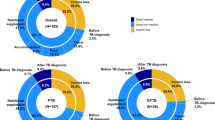Summary
In the absence of evidence in the literature on cost factors in the management of leprosy, a reference is made to the sporadic attempts to study costs of case detection and treatment. Such studies indicate that in the currently declining phase of leprosy endemicity, employing a conventionally trained, salaried class of paramedical staff for field surveys is prohibitively expensive if cost per case detected is computed. Involving primary healthcare and community derived workers is cost effective. Likewise, short course chemotherapy with newer drugs under trial, administered under supervision by community volunteers, reduces the expenses considerably. Community-based disability services using inexpensive tools may cut costs by 90%. Operational research on cost effectiveness of rehabilitation comparing ‘integrated’ with ‘vertical’ approaches is, unfortunately, still in a primitive stage.
It is urged that in view of the changing logistics, manpower costs and financial implications should be given serious consideration by health planners. Postelimination problems such as: (i) unearthing hidden cases; (ii) community-based supervised treatment with highly promising newer drugs; (iii) identification of reactions and relapses; and (iv) field management of disabilities resulting from acute and silent neuritis etc could be solved in a much cheaper manner. Integration of leprosy into general healthcare services and community-based rehabilitation of leprosy patients along with those disabled by other diseases will be the major task in future as these procedures are expected to reduce management costs and eliminate stigma.
Similar content being viewed by others

References
Hansen GA. Spedalskhedens arsager (cause of leprosy). Int J Lepr 1955; 23: 307–9
World Health Organization (WHO). Leprosy disabilities: magnitude of the problem. Weekly epidemiological record. Geneva: WHO, 1995; 70: 269–76
Faget GM. Chemotherapy of leprosy. Int J Lepr 1947; 15: 7–14
Shepard CC. The experimental disease that follows the injection of human leprosy bacilli into footpad of mice. J Exp Med 1960; 112: 445–54
Pearson JMH. Sulphone resistance in leprosy: a review of 100 proven clinical cases. Lancet 1975; II: 69–72
Indian Association of Leprologists. Workshop on problems and perspectives in elimination of leprosy; 7 Dec 1996, Rudrapur
Damien Foundation India Trust. Workshop on developing strategies for reaching urban patients; 18 Dec 1996, Madras
World Health Organization (WHO). Progress towards elimination of leprosy as a public health problem: weekly epidemiological record. Geneva: WHO, 1996; 71: 149–56
World Health Organization (WHO). Tropical disease research news. Geneva: WHO, 1991: 636
Narayanaswamy PS, Pai VV, Ganapati R. Leprosy elimination: at what cost? Studies on leprosy: Bombay leprosy project. Vol. III. In press
Kathe VJ, Naik SS. The participation of NSS students in leprosy eradication programme for last 7 years in Bombay. Indian J Lepr 1996; 68: 261–2
Revanker CR, Bulchand HO, Kalpana C, et al. Leprosy elimination campaign in a metropolitan leprosy project. Studies on leprosy: Bombay leprosy project. Vol. III. In press
Ganapati R, Revankar CR, Bandkar KR, et al. Leprosy detection through non-survey techniques. Indian J Lepr 1984; 56: 622–5
Ganapati R, Revankar CR, Pai RR. Three years assessment of multidrug therapy in multibacillary leprosy cases. Indian J Lepr 1987; 59: 44–9
Rao PS, Reddy BN, Krishnamurthy P, et al. Initial intensive therapy for multibacillary leprosy patients: in retrospect. Lepr Rev 1992; 63: 355–6
World, Health Organization (WHO). Action programme for the elimination of leprosy. Geneva: WHO, 1996
World Health Organization (WHO) 7th Expert Committee (1997). WHO technical report. In press
Ganapati R, Shroff HJ, Gandewar KL, et al. Five year follow-up of multibacillary leprosy patients after fixed duration chemotherapy. Proceedings of the Sixth Symposium on Leprosy Research; 1990 Oct 3-7; Genoa, 223–9
World Health Organization (WHO). Technical report series 847. Geneva: WHO, 1994
Kingsley S, Pai VV, Ganapati R. Disability management—how expensive? Studies on leprosy: Bombay leprosy project. Vol III. In press
World Health Organization (WHO). A guide to eliminate leprosy as a public health problem. Pocket ed. Geneva: WHO, 1996: 71
Ganapati R. Leprosy: a glimpse at the changing scenario. Bombay: ALH, RRE Society and Bombay Leprosy Project, 1996: 51–2
Ganapati R, Narayanaswamy P, Prasad SN, et al. Can NGOs effect savings for the donor? Bombay: Bombay Leprosy Project, 1996: 5
Kartikeyan S, Chaturvedi RM. Pattern of leprosy deformities among agricultural labourers in an endemic district: a pilot study. Indian J Lepr 1992; 64: 375–9
Kuppusamy P, Richard J, Selvapandian AJ. A study of causes of unemployment among agricultural labourers affected by leprosy. Lepr India 1979; 51: 369–75
Fritchi EP. Values and limitation of surgery in leprosy. Lepr India 1976; 48: 4–7
World Health Organization (WHO). Technical report series 221. Geneva: WHO, 1960.
Author information
Authors and Affiliations
Rights and permissions
About this article
Cite this article
Naik, S.S., Ganapati, R. Socioeconomics of a Global Leprosy Eradication Programme. Pharmacoeconomics 13, 677–686 (1998). https://doi.org/10.2165/00019053-199813060-00004
Published:
Issue Date:
DOI: https://doi.org/10.2165/00019053-199813060-00004



